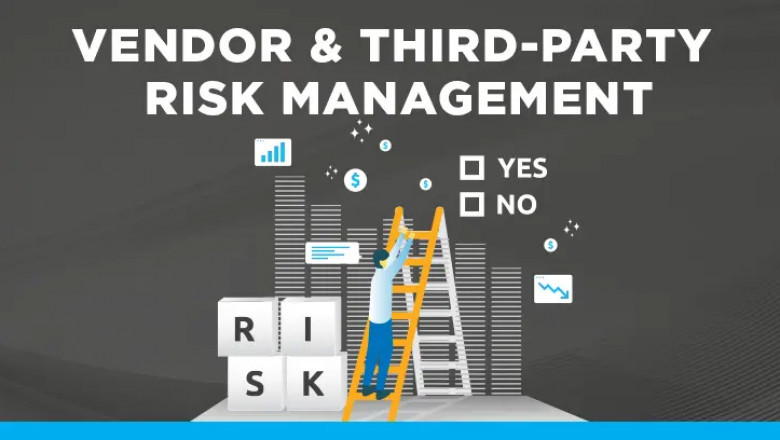views
Introduction
In today’s interconnected business environment, organizations increasingly rely on external partners to provide services, software, and infrastructure support. As this reliance grows, so does the need to understand and manage the risks these partners pose. Two commonly used terms in this context are vendor risk management and third-party risk management. While often used interchangeably, these terms have distinct meanings and implications.
Defining Vendor Risk and Third-Party Risk
Vendor risk management (VRM) refers specifically to managing the risks associated with vendors—external entities that provide goods or services directly to an organization. These may include IT service providers, software vendors, supply chain partners, and consultants. The primary focus of VRM is on the operational, financial, regulatory, and reputational risks that these vendors could introduce.
Third-party risk management (TPRM), on the other hand, encompasses a broader category. It includes all third parties that have a relationship with the organization, whether or not they are vendors. This can include partners, affiliates, contractors, and even cloud service providers. TPRM looks beyond direct service providers to examine the full ecosystem of external entities that interact with or support an organization.
Key Differences
1. Scope
Vendor risk management is a subset of TPRM. All vendors are third parties, but not all third parties are vendors. For instance, a joint venture partner or a regulatory body may not be a vendor but still falls under third-party risk considerations.
2. Risk Categories
VRM typically focuses on risks related to performance, delivery timelines, compliance with service-level agreements (SLAs), and product quality. TPRM broadens this to include cybersecurity, data privacy, geopolitical risks, and fourth-party risks (risks arising from the subcontractors of a third party).
3. Management Strategy
Managing vendor risk often involves onboarding assessments, continuous monitoring, contract reviews, and audits. TPRM strategies, meanwhile, may incorporate risk scoring models, data mapping, due diligence across multiple touchpoints, and alignment with frameworks like ISO 27001, NIST, or SOC 2.
Why the Distinction Matters
Understanding the distinction is critical for organizations building risk management programs. A narrow focus on vendors might leave other significant third-party risks unaddressed. For example, if a data analytics partner with access to sensitive information isn’t classified as a vendor, it might bypass risk assessments, leading to potential data breaches or regulatory violations.
From a compliance standpoint, various regulations (e.g., GDPR, HIPAA, or OCC guidelines) mandate risk assessments of all third parties, not just vendors. A holistic Third-Party Risk Management
approach ensures that an organization meets these requirements and builds resilience into its external relationships.

Integrating Both Approaches
For optimal results, companies should develop a comprehensive TPRM framework that includes VRM as a core component. This unified strategy helps standardize due diligence procedures, streamline onboarding processes, and maintain consistent oversight across all external relationships. Advanced technologies like third-party risk management platforms, automation tools, and AI-driven analytics can further enhance visibility and control.
Conclusion
While vendor risk management and third-party risk management are closely related, understanding their differences is essential for effective governance, risk mitigation, and compliance. By broadening their focus from vendors alone to all third parties, organizations can better protect themselves from the wide array of external risks that can impact operations, reputation, and regulatory standing.
For more information,
Visit at: https://skyrecoups.tech/vendor-risk-vs-third-party-risk/





















Comments
0 comment